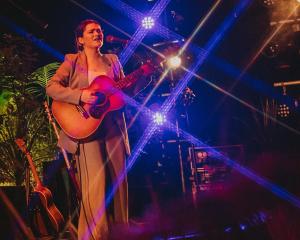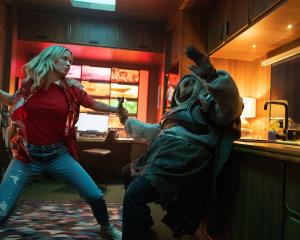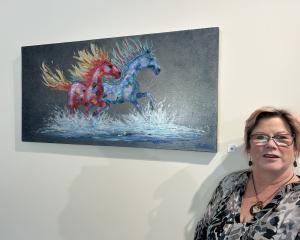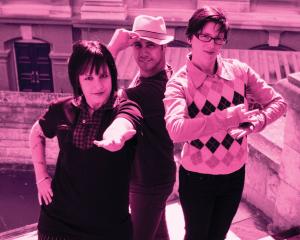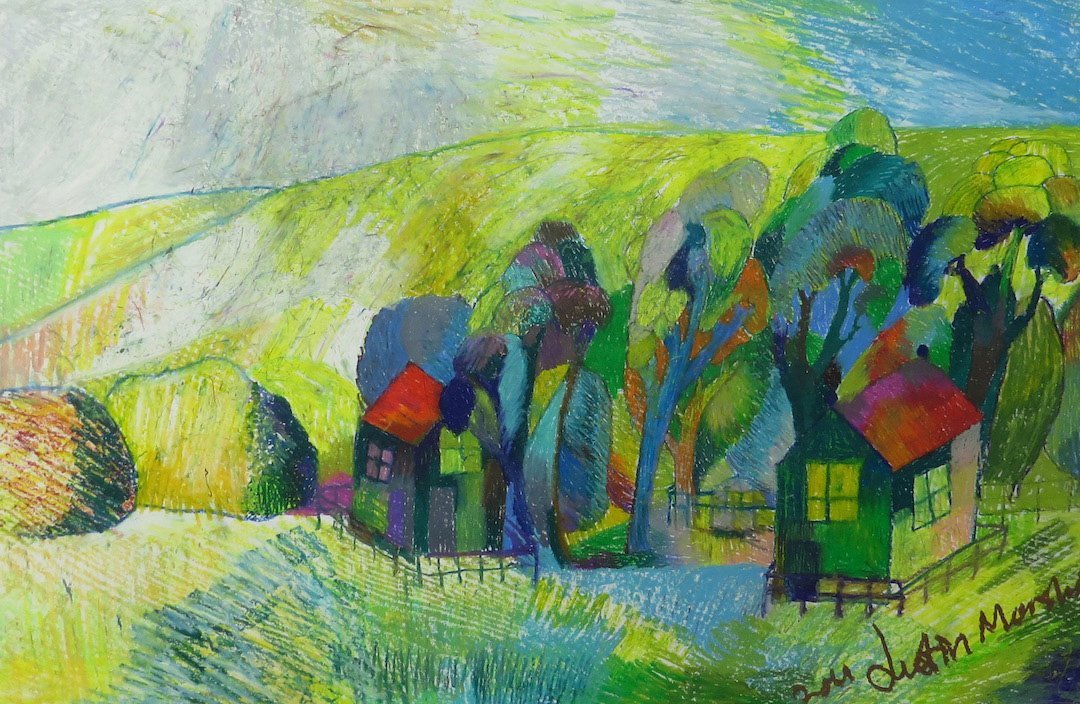
(Moray Gallery)
Justin Morshuis’ latest exhibition at Moray Gallery presents a move for the artist away from his previous small works towards larger-scale images.
Predominantly using oil-pastels, the artist has allowed colour to take centre stage in many of these pieces. Using a semi-naive expressionistic style, Morshuis seems to have drawn influence from the early 20th century Blaue Reiter school of artists such as Kandinsky and Marc. Groups of figures wander among simplified trees and buildings.
Heavily textured background radiates the warmth of a summer’s day to some of these works. In others, such as the overwhelmingly festive The Park Bench, the sky becomes a heavy hot lid of solid colour.
The effect of the strong pastel colours becomes even more evident when compared with the one ink work in the exhibition, the intriguing yet busy monochrome Sunday Outing. This work has a lot of charm, yet fails to instantly grab the viewer in the same way as the pastels. It requires longer study, but is satisfying despite — or perhaps because of — this.
The exhibition is completed by two of Morshuis’ more familiar impastoed acrylic works. The rougher, more painterly forms of Rural Cottage and particularly The Witching Hour create a strong atmosphere which adds the salt to the sweet caramel of the other pieces.
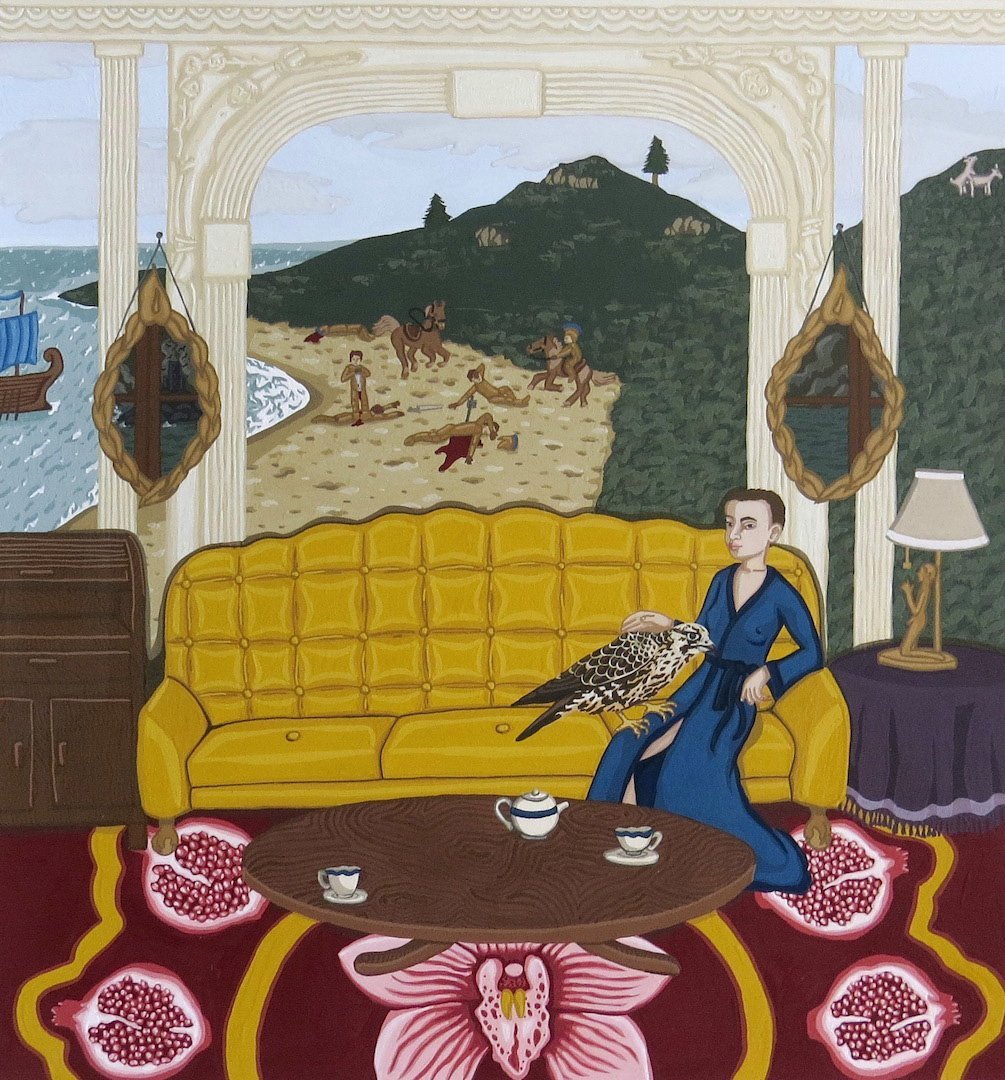
(Olga)
Archetypes, by Pippi Miller, is a brave and bold exhibition tackling a
subject which a frequent artistic trope — the transition from childhood to adulthood — but doing so with both verve and chutzpah.
The artist has taken a deeply psychological approach , using the term "archetype" both in its usual artistic sense as a recurring theme or character, but also in the Jungian psychological sense, that of deep-rooted unconscious natural instinct.
Miller’s images are strong and unsettling. We are shown scenes taken from the middle of an ongoing narration. Something has happened or is about to happen to the characters, yet the images have been presented in a deliberately dispassionate way. This arch technique has heightened the tension and their unsettling nature.
The titles, taken from legend and mythology, give cues to understand what is going on, but they are only tantalising clues. There is more going on in these tales than the titles alone suggest. Little Red hints at the fairy tale of Little Red Riding Hood, although the stain on her dress could indicate the sudden arrival of puberty. Is the nude Witch being burnt at the stake, or the person who set and organised the bonfire? These deeply enigmatic works will leave you thinking about them long after you leave the gallery.
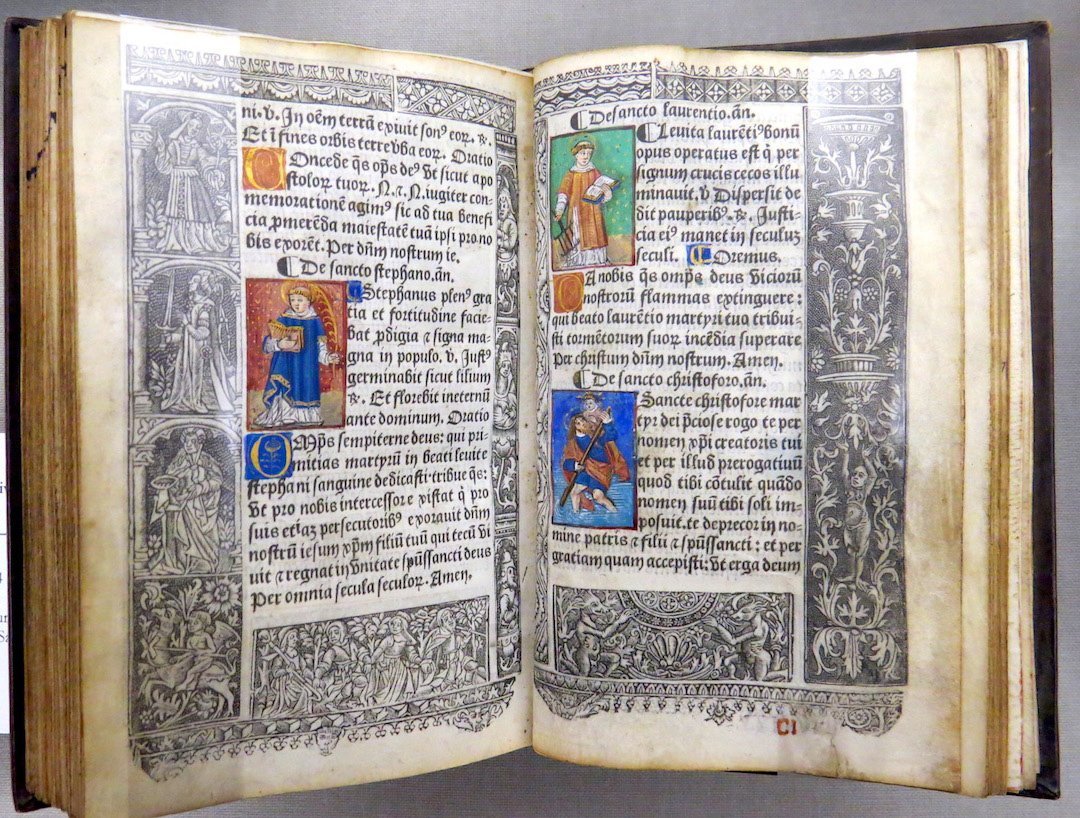
(Reed Collections, Dunedin Public Library)
Some facets of daily life seem so ordinary, so mundane, that we rarely think of how astonishing they are.
Such, to a large extent, is the case with printing. When movable type was first introduced to Europe in the 15th century, it would have been a revelation, and a defining moment in the history of Western civilisation. As such, and given the laborious processes involved, it is no surprise that books were treated as treasures, with individual pages decorated in elaborate and beautiful detail.
Dunedin City Library has an excellent collection of early printed works, many of them the bequest of the collection of noted writer and publisher A.H. Reed. In The Glory of Print, many of the library’s finer pieces are displayed, from dense 15th century black letter text to intricately illustrated 19th century title pages. The most notable historical piece on display is a page from a Gutenberg Bible, the first major work to be printed in Europe.
This piece has major scholarly interest, but art lovers may find themselves drawn more to the intricately illustrations of John Ogilby’s 1660 Bible, Hartmann Schedel’s 1493 Liber Chronicarum, or Johann Schonsperger’s 1519 Teuerdank. Jehan de la Roche’s beautiful 1514 Book of Hours is a stand-out among the many remarkable pieces on display.
By James Dignan

